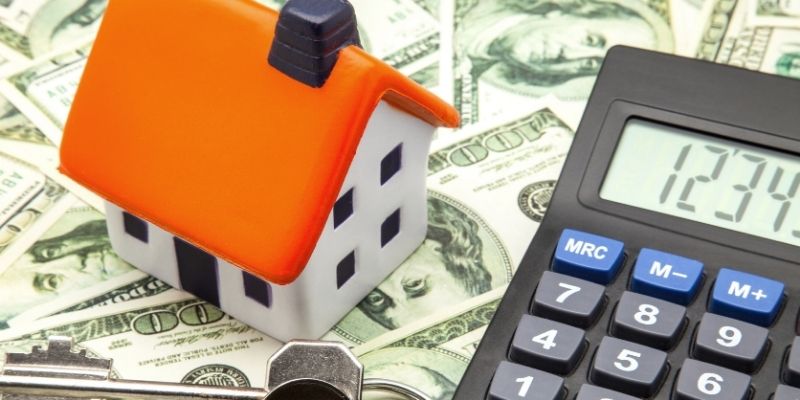These days with the Internet and almost unlimited information, you may decide you would like to sell your home and set the home list price without the full-service Realtor® approach.

It may work out or not, but there is another reason for knowing how real estate agents determine the home list price for the sale.
What’s Your Home Worth?
Instant Online Home Value Calculator
Even if you use a real estate agent to set the home list price, knowing how they determine the optimal listing price is essential.
You should know how to ask the right questions to determine if they used the appropriate comparable sold prices and if they accurately valued your home.
There are some essential steps in the process, but you can learn how to set your home list price along with your real estate agent.
Step #1 for Home List Price: Gather Comparable Recent Home Sold Prices (Comps)

The real estate agent will gather the most recent and relevant sold prices for homes in the neighborhood with these criteria in mind:
Comps must be as current as possible – the sold properties should have closed as close in the past as possible, preferably in the past few weeks or no more than 90 days in the past.
In faster markets like Las Vegas, comps should be as short as possible; 30-days is excellent.
Older comps are not as trustworthy, as the market has probably changed in the interim.
Comps must be as nearby as possible – comparable sold properties should be in the same neighborhood or subdivision.
If not, they should be as nearby as possible, or the chosen comps should come from similar neighborhoods.
Homes must be as similar to the subject property as possible.
This similarity applies to the houses’ characteristics, such as the number of bedrooms, baths, and garage spaces.
Those are the basics, but construction, style, and other factors may come into play as well.
Differences between the comps and the subject property must result in accurate adjustments to the sold prices – the job of the agent is to determine the value of differences between the sold properties and the subject property to be valued.
They would adjust the sold prices to be as similar to the subject property’s characteristics as possible.
Once a price per square foot is determined, it is applied to the subject property for the home list price.
Once the three to five comps are determined and differences are adjusted, the average price per square foot is determined and multiplied by the subject property’s square footage to determine the home list price.
Depending on how difficult it is to find the best comps and adjust their sold prices for differences, this whole process may only take an hour or so. Using an example is the best way to illustrate how to determine the home list price.
Step #2 for Home List Price: Gather the Comps
These days it isn’t too difficult to get a real estate agent to set you up with an automated email alert from the MLS, Multiple Listing Service, to send you reports of sold properties as they close.
You will know as quickly as the other real estate agents, and the reports will have all the information about the homes you need.
You will get these as they close, so the newest ones will be the most recent sales.
You can look at the home characteristics and determine which are the closest to your home.
What’s Your Home Worth?
Instant Online Home Value Calculator
Even if you are not getting this information, ask your agent to show you their comps to help determine if the home list price, they recommend sounds accurate for your current market.
For example, if your home is the “Subject Home,” it would have three bedrooms, two baths, a two-car attached garage, and would be 1900 square feet in size. Also, for this example, here are three comps selected from recently sold nearby homes:
• Comp A: 3 bedrooms, two baths, two-car garage, 2000 square feet, sold for $203,500.
• Comp B: 4 bedrooms, 2 ½ baths, two-car garage, 2200 square feet, sold for $219,900.
• Comp C: 3 bedrooms, one bath, single car garage, 1750 square feet, sold for $192,600.
Step #3 for Home List Price: Make the Sold Price Adjustments
The task is to adjust those sold prices to reflect better if the comparable home was just like the subject home in characteristics. The examples will explain the process best:
• Comp A has all the same attributes in bedrooms, baths, and garage size. Square footage does not matter at this point, so no adjustments are necessary, and the sold price of $203,500 will be used, which results in the price per square foot of $203,500 / 2000 = $101.75/sq foot.
• Comp B has two characteristics that differ. It has one more bedroom and an extra ½ bath. The task is to adjust the price down to reflect better what it would have sold for if it had the same characteristics as your subject property.
The only way to do this is to know the approximate value of a bedroom and a half-bath. The best way to find out is to ask an appraiser, as they do this all the time.
For this example, it is assumed that an additional bedroom, if added during new construction, would have been approximately $23,000. For the half-bath, the value would be $4900.
Since they are both larger than your subject home’s characteristics, you would have to subtract from the sold price to bring them more in line with your home.
So, $219,900 – $23,000 – $4900 = $196,410 adjusted sold price for $89.27/sq foot.
• Comp C is short one bath and a garage space.
Using $9800 as the bath’s value and $3900 for the garage space, the adjusted value would rise to reflect your larger subject home better.
So, $192,600 + 9800 + $3900 = $206,300 adjusted sold price for $117.89/sq foot.
Now you average the three prices per square foot to come to an average price per square foot for the three adjusted comps of $103.64 average/square/foot.
Using that average value per square foot, you multiply it by the 2000 square foot size of your subject home to come up with a home list price of $207,280.
Keep in mind that there is a lot of “estimating” going on here, and you should expect different agents to come up with different numbers for your home list price, but they should not be too far apart.
Knowing how it is done puts you in cooperation with your agent in the pricing.
Ultimately, it’s the market that prices a property. That data will show you what the market is calling for.